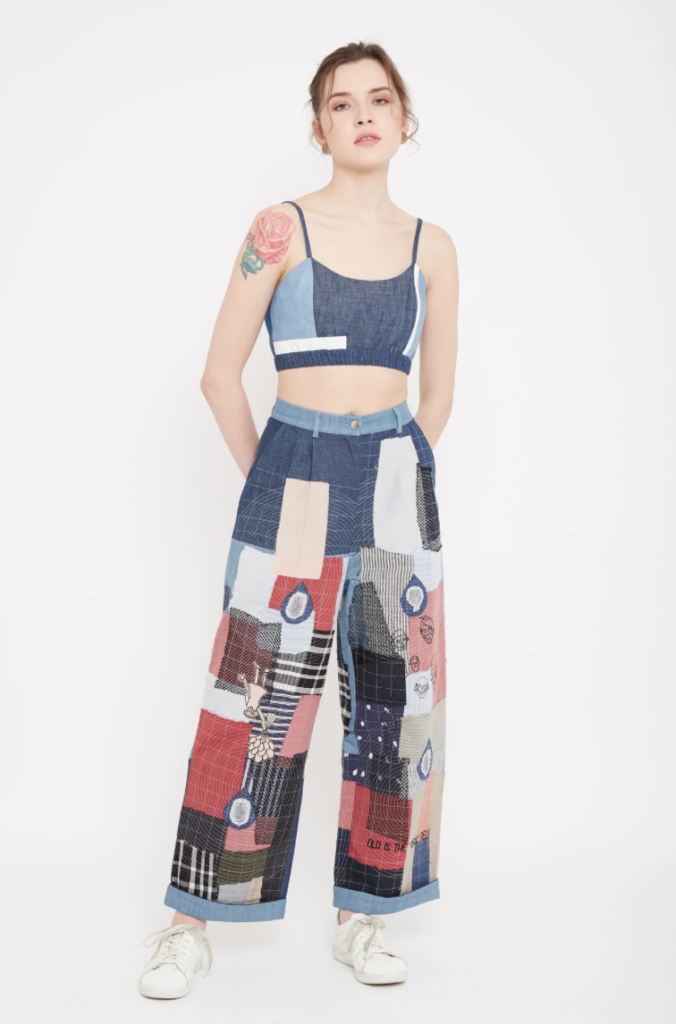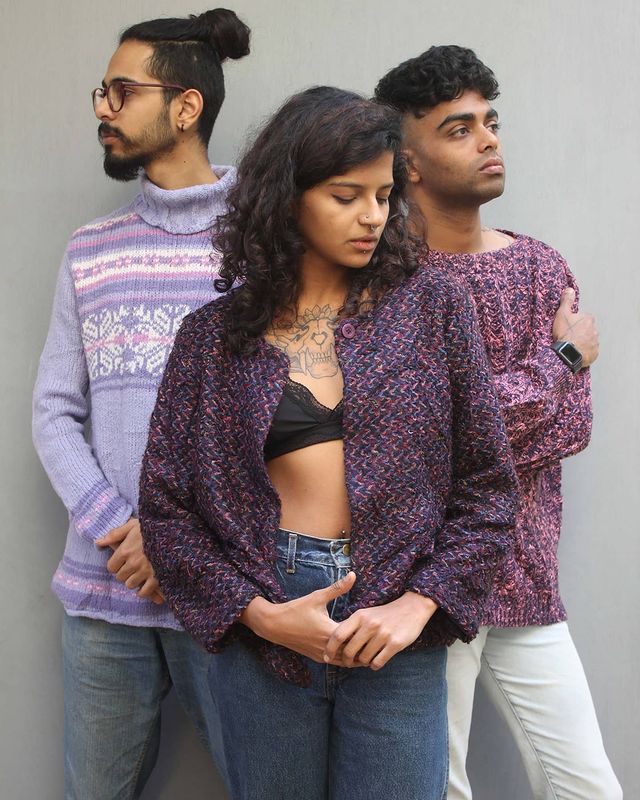Indian millennials lead movement for slow fashion

Doodlage's stylish 'Ava' crop and pants set on the left is made from leftover recycled fabrics to ensure nothing goes to waste (Photo: Doodlage/@kunalgupta91)
Global warming and environmental degradation is frequently blamed on major issues such as deforestation or emissions of greenhouse gases as well as sectors like energy or transport.
However, there are some sectors that broadly escape scrutiny and cause significant ecological damage. The fashion industry is one such sector, responsible for 10 pc of the world’s annual carbon emissions, five times more than aviation. The extremely polluting, waste and water-generating techniques employed by the industry get multiplied by “fast fashion,” or clothes that are produced quickly and inexpensively in often controversial, deplorable working conditions. Famous global brands such as Zara and H&M, which have been at the forefront of fast fashion for years, are now competing against even worse ethical practices of internet shopping companies like Zaful and Fashion Nova that have exploded in popularity, especially among the youth.
Companies leading the sustainable fashion effort
Sustainable or “slow fashion” on the other hand, involves making clothes from eco-friendly or recycled fabrics, using organic (chemical-free) dyes without any animal testing, and using fair-trade practices such as fair pay and without child labour.
Over the last decade, there has been an increase in Indian brands adopting sustainable techniques and raising awareness among consumers. One such company, Doodlage, was started by Kriti Tula in 2012.
“As a designer, I was always inclined to find solutions and Doodlage started exactly with that agenda. Our aim was to start a conversation around ways to bring circularity in fashion and raise awareness around the impact of a linear fashion model. As a bootstrapped firm, we worked with one problem at a time with very limited funds and carefully curating our supply chain,” Tula tells Media India Group.
If factory waste from India, China and Bangladesh was used to make fresh garments, the multinational fashion companies could make clothes worth millions of dollars, trading all the resources that go into making fresh fabrics and saving tonnes of pieces from their fate of down-cycling.
Tula’s company engages in the practice of “upcycling” which is a specific form of recycling that turns waste into a higher-quality product. Doodlage works with 3 key raw materials: factory waste, post-consumer waste, using handloom-based recycled fabrics, and managing waste from their own studio.
“Our fabric suppliers for post-production waste are several exporters and manufacturing units; since the waste is available in tonnes just around Delhi, we are sadly spoilt for choice. Our fabrics use no added chemicals or water for manufacturing. Scraps post our production are separated into light and dark colour. Lighter colours are used to make paper for our notebooks and packaging; darker colours to create textures for accessories. We also collaborate with like-minded brands to create a wider product range and connect with more corporates to adapt more sustainable practices by providing them alternate solutions to packaging, merchandising, uniforms and gifting,” explains Tula.

The “Cloudwalker collection – Upcycled basics”: a zero waste endeavour (Photo: Doodlage)
Doodlage also challenges the misconception that ethical fashion makes for drab, scruffy results, and instead uses creative techniques to showcase high-fashion pieces such as trendy patchwork jackets and beautiful ethnic-style shirts and kurtis.
“We try to keep our designs seasonless, versatile and for all-day wear. Each piece is made to last and we encourage customers to come back to us for necessary repairs,” she adds.
Several other Indian brands are joining this movement, such as Ka-Sha studio by Karishma Shahani, which also focuses on upcycling by using materials such as old vegetable sacks, plastic bags and disposed-off jeans to create jackets and other bold pieces, and Bhu:sattva, a label that is researching and working on trying to blend fabrics made from banana and bamboo with staples such as cotton and silk to make ethically-produced ethnic wear.
How Indian millenials strive to be more environment-friendly
In addition to established fashion brands, there has also been growing a vintage and second-hand clothing movement in cities like Bombay and Bengaluru. Making use of social media sites like Instagram, there are a rising number of thrifting and small slow-fashion businesses among India’s youth, who are more aware of the impact of sustainable fashion and mindful shopping.
“I studied fashion design in college, and the more I learned about it the more I realised how a lot of it felt so thoughtless and mindless. Companies just want to churn things out quicker and a lot of the clothes don’t even last six months. The entire appeal of wearing something and then discarding it just gives temporary gratification,” says Divya Runwal, a 27-year-old art director who started her small vintage clothing business Rafu, in June of last year. “Also, what we have learned in our Indian culture through generations is the process of actually using things for much longer, mending, repairing; just these values of sustainability have been taught in a lot of ways in my own household.”

Models showcase thrifted pieces from Rafu(photo: everyday_rafu)
Runwal curates, mends, re-designs and sells vintage pieces all the way back from the 1950s to early 2000s, ranging from a few pieces from high-end brands like Armani and Chanel to more affordable, everyday options.
“Fashion is really important to many of us, that’s what you’re putting out there as your first impression. It’s actually beautiful in the way that this is not like Zara or H&M, where you just go to the same place as everyone else and it becomes a cheerleader effect where everyone looks the same,” Runwal tells Media India Group, adding, “I’ve been procuring one-off vintage pieces and some of them have aged so it’s also a process of re-designing, mending them and making them new again with the necessary changes in design, so I can still keep them relevant with what’s trending in the market right now.”
Runwal also feels that although using ethical practices and materials is important, individuals can make more of an impact by reusing what they already have. The sheer number of discarded clothes every year results in 500,000 tonnes of plastic microfibers in the ocean, enough to make 50 billion plastic bottles.
“I think just being sustainable is not enough anymore, people can be sustainable but you’re still creating things, versus the whole process of thrifting and regenerative fashion is using whatever you have to pursue your sense of style,” says Runwal.
This notion is supported by circular fashion companies like Doodlage, who actively encourage their consumers to not only buy their clothes, but also gives them alternatives to adapt a more sustainable lifestyle. Tula explains that one of Doodlage’s future goals is to raise funds to introduce a thrift section to their website as well.
“Sustainability for every industry is essential to support the planet we live on. We cannot continue to exploit natural resources in a linear model. Many businesses large and small are working with the right intent in the area. I sincerely believe that it is difficult to foresee a healthy future if we don’t change the way we produce and consume things,” says Tula.









